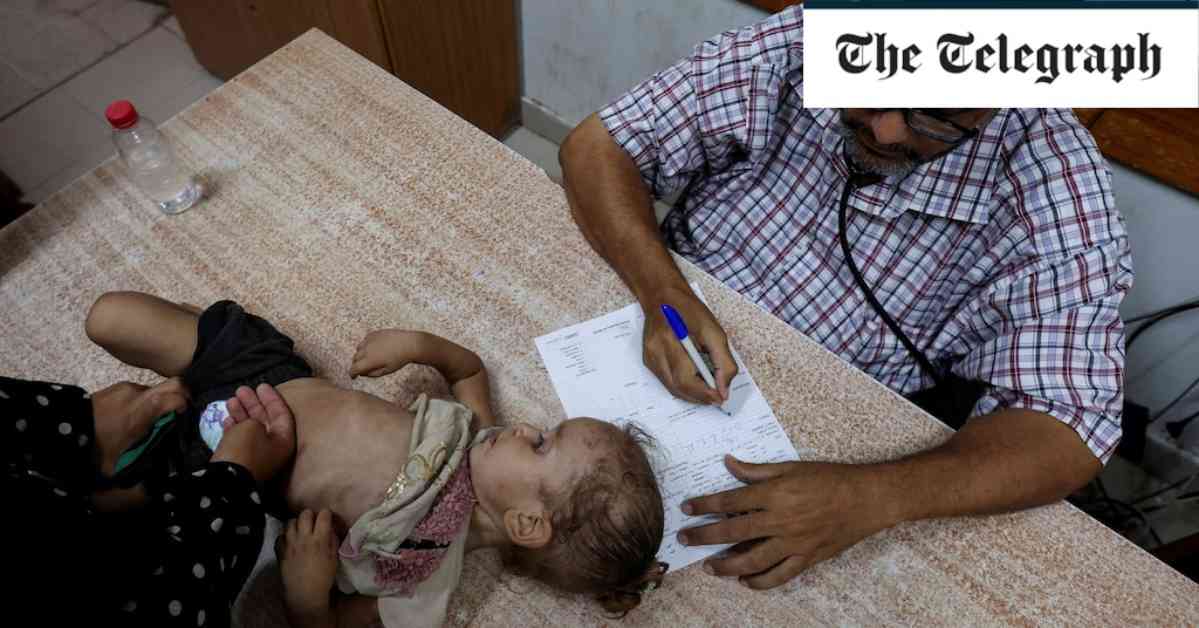The Middle East is facing a potential polio crisis as the World Health Organization (WHO) warns of a major outbreak if truce talks in Gaza fail to progress. The recent case of polio reported in Gaza, the first in 25 years, has raised concerns about the spread of the disease to neighboring countries and beyond. With the ongoing conflict in the region complicating vaccination efforts, urgent action is needed to prevent a public health disaster.
The Threat of Polio in the Middle East
Polio, a highly contagious virus that can cause paralysis and even death, poses a serious threat to the health of children in Gaza and beyond. The recent case of a 10-month-old child in Deir al-Balah, Gaza, who was confirmed to have polio highlights the urgency of the situation. Dr. Tedros Adhanom Ghebreyesus, the WHO Chief, expressed grave concern over the case, emphasizing the need for immediate action to prevent further spread of the virus.
The risk of polio spreading beyond Gaza is high, with neighboring countries like Israel, the West Bank, Lebanon, Syria, Egypt, and Jordan at risk. Dr. Hamid Jafari, the director of the WHO’s polio eradication program in the eastern Mediterranean, stressed the importance of acting quickly to prevent a wider outbreak. The presence of Orthodox Jewish communities in Israel who may be less likely to be vaccinated adds another layer of complexity to the situation.
Challenges of Vaccination Campaign
The WHO’s plan to implement a mass vaccination campaign in Gaza faces numerous challenges, including the presence of a vaccine-derived strain of poliovirus. Unlike the inactivated polio vaccine (IPV), the oral polio vaccine (OPV) contains a weakened form of the virus that can lead to vaccine-derived infections in areas with low vaccination rates. The new and improved version of OPV, known as NoPV2, aims to reduce the risk of such infections, but achieving high levels of vaccine coverage is essential for its effectiveness.
The vaccination campaign in Gaza aims to reach over 600,000 children in two rounds, with the first scheduled for the end of August and the second in September. However, the ongoing conflict in the region hampers efforts to carry out the vaccination drive effectively. The destruction of Gaza’s healthcare system further complicates the situation, as less than half of the territory’s health facilities are currently functional.
Urgent Need for Ceasefire
Dr. Jafari emphasized the need for a ceasefire to allow for the successful implementation of the vaccination campaign. Without a pause in the fighting, reaching vulnerable children in Gaza and providing them with the necessary vaccinations will be extremely challenging. The aid group Mercy Corps estimates that around 50,000 babies born in Gaza since the start of the conflict have not been immunized against polio, highlighting the urgent need for action.
In order to establish vaccination sites in Gaza, alternative locations such as schools, shelters, and community centers may need to be utilized. However, the logistical challenges posed by the conflict make it difficult for healthcare workers to access these sites and administer vaccines to children in need. The WHO and Unicef are working tirelessly to overcome these obstacles and ensure that as many children as possible are protected against polio.
The potential spread of polio in the Middle East is a serious concern that requires immediate attention and cooperation from all parties involved. The consequences of a widespread polio outbreak could be devastating, not only for the children of Gaza but for the entire region. It is crucial that truce talks in Gaza progress to allow for the successful implementation of the vaccination campaign and prevent a public health crisis from unfolding.
As the world watches the situation in Gaza unfold, the need for global health security measures becomes increasingly apparent. Protecting vulnerable populations from preventable diseases like polio requires a coordinated effort from governments, healthcare organizations, and humanitarian groups. By prioritizing the health and well-being of all individuals, we can work together to ensure a safer and healthier future for generations to come.












